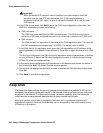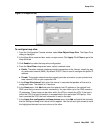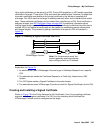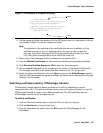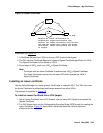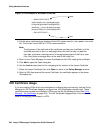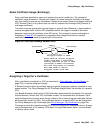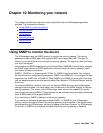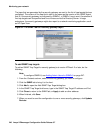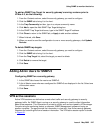
Using advanced features
240 Avaya VPNmanager Configuration Guide Release 3.7
Figure 79: An Example of an Issuer Certificate
3. Cut the issuer certificate from whatever file the PKI system sent it in, then paste it into a text
file. The file can have a DER or TXT file name extension.
Note:
Note: The alignment of the right side of the certificate must be even (justified), so if the
certificate was sent to you in a web page where the last line may run past the
right side, just place a carriage return in the appropriate place of the line to even
it up. Also, place a carriage return at the end of the footer line.
4. Return to the Policy Manager for Issuer Certificates for the VSU needing the certificate.
5. Click Add to open the Open dialog box.
6. Use the Look in drop-down list for navigating to the location of the Issuer Certificate.
7. Select the Issuer Certificate, then click Open to return to the Policy Manager window.
8. After the VSU has received the Issuer Certificate, the certificate appears in the Issuer
Certificates list.
IKE Certificate Usage
If you are creating VPNs which use certificates for authentication and security, use the Policy
Manager for IKE Certificate Usage to configure how VSU Certificates must be used. Those
certificates were created and installed in VSUs from the My Certificates policies (See Policy
Manager - My Certificates on page 234). The IKE Certificate Usage policies is the mechanism
used for exchanging certificates in a VPN.
-----BEGIN CERTIFICATE-----
nfi897rho987fb+mht>,oi$s25hgj98iJop)kjh
GrDfgyui987jg55dJ99KJY6%$3@@Sd5()~
43dbi0oMl=_+;mhjuuhJ8*&tfeEckiooplkjghf
hkjhyytuUTffRgYyYUy^6676%$$RgLo0l0LI
-----END CERTIFICATE-----
Header
Footer



